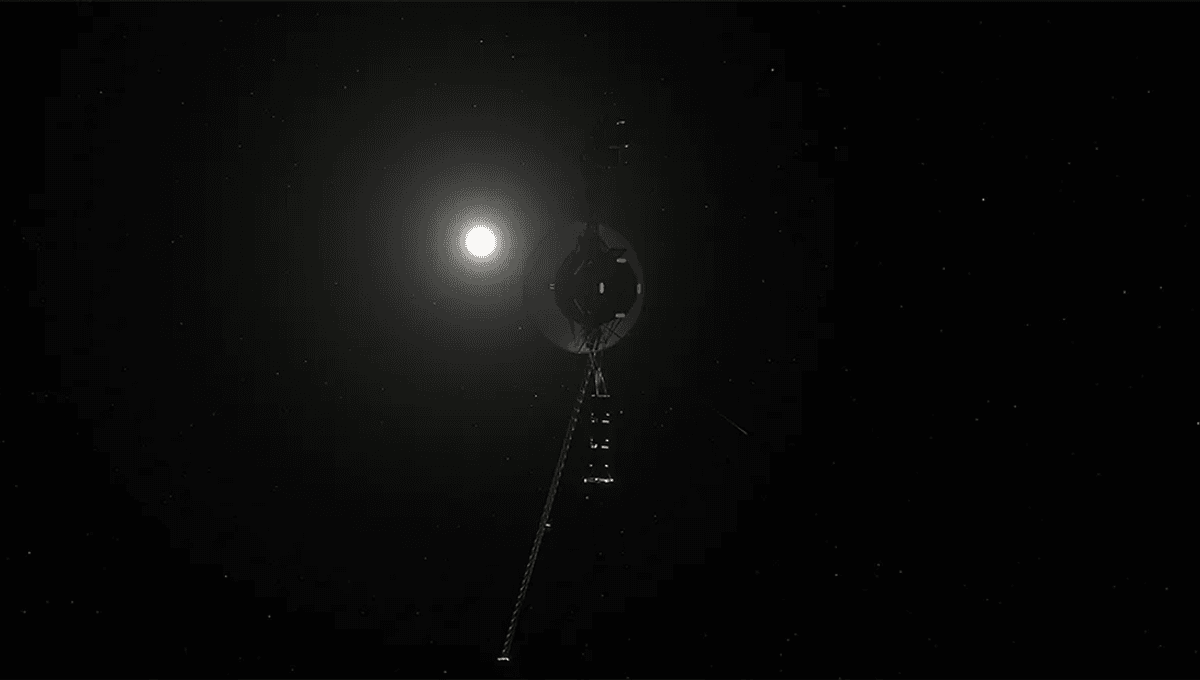
In 1977, NASA launched Voyager 1 and 2, the spacecraft that have traveled further than any human-made objects, crossing the heliopause and heading into interstellar space.
While doing so, the probes have been communicating constantly with Earth, even if Voyager 1 has recently begun sending back repeating patterns of 1s and 0s. It has also sent signals propagating outwards, where alien civilizations – should they be out there at all – could potentially pick up on them.
Earlier this year, a study looked at how far signals from NASA probes have reached into the galaxy and found that the earliest we could expect a reply is 2029.
The team looked a number of probes sent out by the US space agency, including Voyager 1 and Voyager 2, Pioneer 10 and Pioneer 11, and the New Horizons spacecraft, and how far their transmissions have propagated. The team then used the Gaia Catalogue of Nearby Stars to discover which stars they will encounter, and when.
“These transmissions have encountered and will encounter other stars, introducing the possibility that intelligent life in other solar systems will encounter our terrestrial transmissions,” the team wrote in their paper. “By determining which stars Voyager 1’s transmissions will encounter, we identify places where possible intelligent extraterrestrial life would encounter terrestrial transmissions and potentially return transmissions toward the Earth”.
Transmissions from Voyager 1 won’t reach their first star until 2044, but will go on to contact 277 stars by 2341, according to the team. Signals from Voyager 2, however, have already reached an M-dwarf and a brown dwarf, both in 2007. The earliest we could expect a return signal would be 2033.
Transmissions from Pioneer 10 have also already encountered a star, Gaia EDR3 2611561706216413696, in 2002. Were there an advanced civilization living around the white dwarf, we could get a reply as early as 2029.
While we’d be incredibly lucky to get a return signal from the first star system we signaled, by the mid-24th century, the probes will have contacted hundreds of stars each, bumping those odds up ever so slightly (though let’s face it, they still remain close to zero).
“This is a famous idea from Carl Sagan, who used it as a plot theme in the movie Contact,” paper co-author Howard Isaacson told Popular Science.
In the movie, aliens receive one of the first TV transmissions sent around the world: the opening of the 1936 Olympic Games. Aliens then send this signal right back at us, meaning that the first contact with an alien intelligence was slightly complicated by them sending us videos of Adolf Hitler.
Thankfully, we probably won’t have this problem.
“This wasn’t the first broadcast, of course,” said senior SETI astronomer Seth Shostak, speaking to RealClearScience. “But it was at a high frequency that might make it through the ionosphere. However, it would have been very low power, and with a non-directional antenna. The idea that aliens might pick it up is pretty far-fetched.”
NASA probes, given the need to send information back to Earth, are far more powerful than TV signals, which are less powerful given that we don’t intend to watch re-runs of Seinfeld on Jupiter. Unlikely though it still is that signals from the probes hit planets containing life, the team hopes that they have provided a good list of target star systems to prioritize in the search for technosignatures.
“We are confident that the surrounding planets of the encountered stars will also encounter the spacecrafts’ transmissions,” the team concludes. “As the beam travels farther to other stars, this radius will only grow, showing that we can assume that all of the planets orbiting each star will also encounter the spacecrafts’ transmissions”.
The study is published in Publications of the Astronomical Society of the Pacific.
An earlier version of this article was published in April 2023.
Source Link: Voyager Has Been Sending Out Signals For Decades. What's The Soonest We Can Expect A Reply?